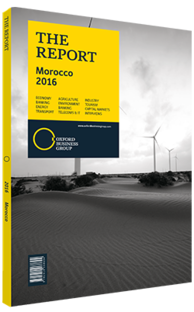Morocco has a sizeable diaspora living worldwide
Morocco’s large diaspora, estimated to comprise up to 15% of the population, has changed considerably since the Second World War when blue-collar workers moved to Europe to help rebuild. Indeed, today the population of Moroccans living abroad increasingly comprises highly-educated young professionals.
Demographics
Recent estimates have put Morocco’s diaspora population at between 4m and 5m, or between 12% and 15% of the population. The Ministry of Moroccans Living Abroad and Migration Affairs (Ministère chargé des Marocains Résidant à l’Etranger et des Affaires de la Migration, MMRE) provides cabinet-level representation and legal, technical and administrative services for the diaspora community. Young men make up the majority of Moroccans living abroad, according to a 2013 MMRE study, with 67.3% of the diaspora made up of males, and 71.8% under the age of 45. According to the study, the majority of those abroad (62%) have left the country since the year 2000, with the MMRE reporting that the bulk of emigrants have moved to North America and Arab countries since 2008.
Despite these shifting trends, the diaspora is still concentrated in Europe, according to an October 2015 report by the World Intellectual Property Organisation (WIPO), with 32% living in France, 20% in Spain and 12% in Italy. Just 6% of the diaspora live in Arab countries, while emigrants to the US and Canada comprise approximately 3%.
Remittances
Remittances from the Moroccan diaspora are a significant source of income for the country, standing at Dh58.8bn (€5.39bn) in 2012 and Dh58.4bn (€5.35bn) in 2013, according to the Office des Changes, roughly 7% of total GDP. Remittances have remained stable despite recent regional and European turmoil, and in April 2016 the World Bank reported that the value of remittances sent from Moroccans living abroad stood at €5.76bn in 2015, making Morocco the third-largest beneficiary of remittances in the MENA region. The bank reported that remittances to MENA should rise “only moderately” by 2.6% in 2016, compared to 4% in 2014, due to low global oil prices and weak economic recovery in Europe. Morocco appears to be bucking these trends, however, and in September 2016 Morocco’s central bank reported that expatriate remittances rose by 4.8% during the first eight months of the year.
Education
WIPO reported that at least 400,000 Moroccans living abroad hold either a bachelor’s or graduate degree, and over 32,000 are senior executives, private sector professionals, researchers and academics. MMRE, meanwhile, in 2013 reported that 12.5% of the total had attended higher education – while other estimates from 2014 put this figure at 16% – considerably higher than the national post-secondary attainment rate of 5%. Stakeholders have expressed concerns that the country is losing its best and brightest to brain drain. For example, WIPO reported that just 2.39% of Moroccan emigrant inventors return home to file patent applications, leading the organisation to conclude that “Moroccan talent abroad is contributing to global innovation and that there is significant scope to harness the scientific, creative and innovation potential of Moroccans living abroad to boost Morocco’s innovation goals.”
Indeed, attracting highly-educated professionals back to the country for long-term work and investment has proved challenging. According to a 2014 report in the Middle East Monitor, few Moroccans living abroad also run businesses inside the kingdom, with investment hampered by bureaucracy, lack of transparency and mistrust in the local economy. Abderrahim Chalfaouat, the report’s author, called on the government to allow parliamentary representation for expatriates arguing that “by providing [ expatriates] the possibility of influencing public policies, Morocco can benefit from the economic capacities and social expertise [they] have gathered elsewhere.”
You have reached the limit of premium articles you can view for free.
Choose from the options below to purchase print or digital editions of our Reports. You can also purchase a website subscription giving you unlimited access to all of our Reports online for 12 months.
If you have already purchased this Report or have a website subscription, please login to continue.

